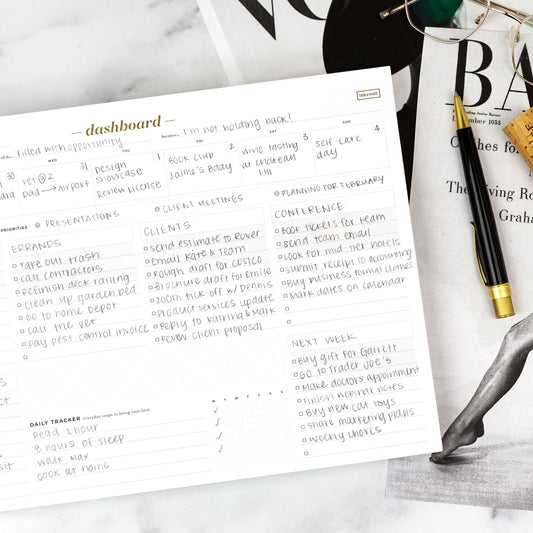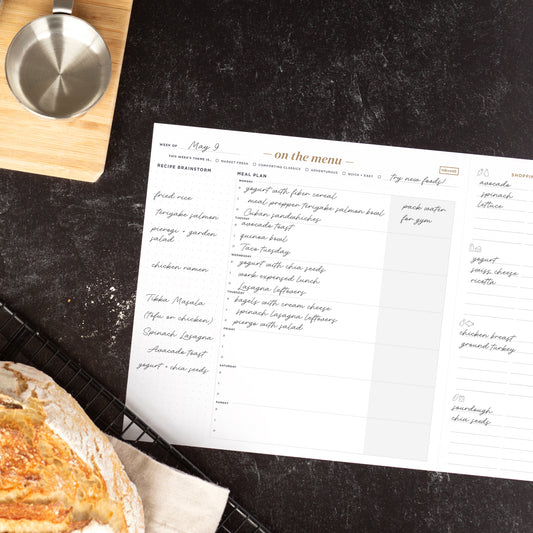This month's 30-day challenge invites you to relax your mind and drop into the present moment.
In collaboration with professional mountain climber and psychologist Matt Walker, we’ve created a 30-day challenge to support the exploration and practice of mindfulness in our everyday lives. This challenge is created to offer a practical set of tools, teachings, and practices to bring mindfulness into your everyday experience.
The 30-day challenge is an opportunity to shift your life in just one month with daily micro-adjustments to your presence and awareness within yourself and the world around you. We will engage each of your senses in small doses all month long to offer an opportunity to create full engagement and purposeful presence in your personal and professional life.
Mindfulness is a way of being in the world, this challenge is your opportunity to practice, refine, and create a new way of being.
By the end of 30 days together, we aim to increase your sense of groundedness and ability to be responsive and not reactive, have clarity of purpose, and be intentional with your energy and thoughts.
Download your free 30-day practical mindfulness challenge worksheet here!
What is practical mindfulness?
Mindfulness. The classic image of sitting in blissful repose in the lotus position in front of an altar of candles, incense, and flowers. Eyes closed gently. Slow methodical breath with a clear and calm mindscape.
Or.
Mindfulness. Waking to a full day of responsibility and demands. Work deadlines. Family needs. Social demands: perceived or real. A seemingly endless to-do list. The need and want to exercise and move your body. The desire for calm and to be in a place of response instead of reaction.
This is the reality of our daily lives, so, let’s meet it with grace, compassion, and intention. Let’s meet it with mindfulness - and let’s meet it with practical mindfulness.
Practical mindfulness is the art of being present in the moment throughout our daily lives in our personal and professional spaces and in each role we play in the world. Practical mindfulness is a series of daily practices that raise our awareness of how we move the world, highlights areas we act or behave unconsciously, gift the experience of being present in the moment, and shift our way of being in the world toward intentional and purposeful.
These practices shift your perspective, some will repeat, some will come only once - some will resonate, others won’t. No judgement - this is a practice in being present. That is all. Let the mind unfold as it does and your nervous system will relax and respond. Keep practicing. And when you slip, get back at it, and keep practicing again. We are in this together.
This month's 30-day challenge practices explained
Within this month's 30-day challenge, you'll find a daily practice to help introduce more mindfulness into your daily life.
For clarity on what each day's prompt means, and how to incorporate it into your routine, read the expanded explanations below.
- Gratitude journal. Five minutes of uninterrupted stream of consciousness journaling with the focus on only sharing gratitude and appreciation. Consider the small details, the people in your life, and the totality of all that is good and available.
- Nature immersion. Ten minutes of walking outside without headphones on, not taking a conference call, nor talking with a friend or family member. This is you and the natural world - however it shows up out your door. Air, sky, bird sounds, rain, cold wind, sun - however it shows up. Ten minutes of walking, breathing, and observing with no purpose or goal.
- 5-minute sit. Sitting meditation 5 minutes - I recommend a guided meditation via the Waking Up app, Calm, or Headspace.
- Social media. No social media today. Turn off the notifications on your devices and refrain from the stream of distraction. Notice the moment you crave the distraction and take two full breaths, notice the desire, and release it.
- Lie down and listen. Create a three song playlist - medium to slow tempo. With headphones on, lie down on the floor, close your eyes, and listen. Really listen to the nuance of each song, the instrumentation, the breath of the vocals, each detail. Notice how your own body responds and relax into the playlist. Want more? Hit play one more time and do it again.
- Body scan. This is a traditional introduction to mindfulness and a helpful tool for reconnecting with your body after being in your head all day. Begin by laying down on the floor in a peaceful space. Take five deep breathes to ground into your body and begin the practice. Next, take a full inhale and exhale as you begin your focus at your feet and take in all of the feeling and sensations you have at them, as you take additional breaths and exhalations you bring your awareness up your body slowly, part by part, until you reach the crown of your head. Take your time and be present for each breath, exhalation, and sensation in your body. If you have a mindfulness app (Calm, Headspace, Insight Timer) - search for the body scan meditation and follow it.
- Do nothing. A favorite and supremely challenging mindfulness practice - do nothing. Literally. Set the timer on your phone or in your kitchen and then sit on your couch for ten minutes - no books, no screens, no phone, no activity; just sit there. That’s it. Let your mind unravel and give yourself the gift of nothingness.
- Favorites. Your favorites on your phone is your auto-dial and a list of those that are closest to you energetically. Take five minutes to delete the favorites list on your phone and repopulate it with those that truly are your favorites. No obligations. No should-be there. Just the ones that are your favorite. Notice how different that feels in your body and the alignment within you - aligning your values and actions.
- Say no. Practice saying no. Simply be aware of our social conditioning to say yes and today practice saying no, be aware of your no, and utilize your no as a way of protecting your own time and energy output. If you would like to change your mind later to yes, you can always do that.
- Drink slowly. Your morning hot drink. Whatever it is - it’s not meant to be poured into a to-go tumbler and sipped while multi-tasking and in transit. This morning sit on the couch, in bed, at the kitchen table, anywhere, but just sit. Sit, drink slowly, and be present to the morning ritual.
- Drop in. Dropping in is a centering and grounding exercise - sit comfortably in a peaceful space and find your breath by focusing on 10 deep inhales and exhales. It may be helpful to count them out as 1 inhale, 1 exhale, 2 inhale, 2 exhale, and so on. Following reaching 10 continue to breath slowly but with each breath imagine the intake going all the way from the inhale to your sit bones and on the exhale the breath following your spine upward and out the crown of your head. Continue this circular breathing pattern while settling into your sit bones and feeling your body relax into the “dropped in” space.
- Time audit. Do your values and actions line up? Take 10 minutes to audit, without judgement, your calendar. Take a close look and categorize your time. Where are you in service to yourself, your work, your health, your family...and where can you adjust your schedule to align your values and actions closer. Try to adjust only the next three days, giving awareness to your physical health, time in nature, connection with others, and community.
- Floor time. This evening turn off the devices, turn off the screen, and dim the lights. We are going to take the next 5 minutes, set a timer, to just breath and settle into your body. There is no goal here - only settling into you body and out of your head, that is the practice.
- Declutter. Choose one room in your home and create space by removing 10 items. If you know you would like to donate them go ahead and do so, or, set them aside and decide one week later if you would like to reincorporate them into your space. Give yourself the gift of clearing clutter and noise and invite more space and literal breathing room into your living space.
- 10 minute sit. Sitting meditation for 10 minutes - I recommend a guided meditation via the Waking Up app, Calm, or Headspace.
- Drawer swap. Your brain responds to repeated patterns - your thoughts, reactions, and personal narrative are repeated patterns. Swap one kitchen drawer for another. Literally, move the contents from one drawer to another - move the utensils to a new drawer and the items from that drawer into the previous utensil drawer. Now watch what happens - evidence of patterned thinking and the unwinding necessary.
- Taste. Without distraction, without scrolling on your phone, without reading, and without a screen on or music - eat a meal slowly. Try this solo or with a partner or family. Notice the textures, the color, and the flavors. Notice the temperatures. Notice how different this experience is than your typical dining time.
- No purchases. Spend no money today. None. Feel the need to purchase something? Make a note of it and revisit it tomorrow. Today is a day to be grateful for the plenty you have and the opportunity to slow the pace of consumption.
- 5 breaths. Set an alarm on your phone for 5 minutes before the end of each hour. At :55 minutes into that hour, pause, take five deep breaths with full inhale and exhale, and eyes closed. That’s it. Repeat for eight hours today.
- 15 minute sit. Sitting meditation for 15 minutes - I recommend a guided meditation via the Waking Up app, Calm, or Headspace.










